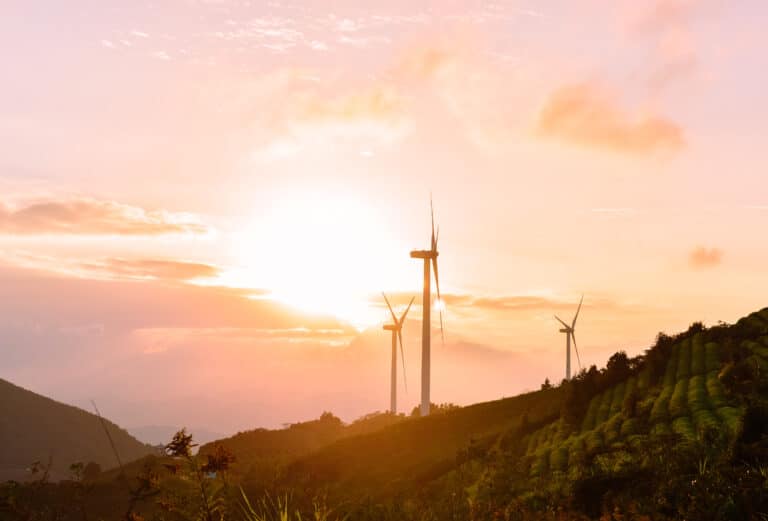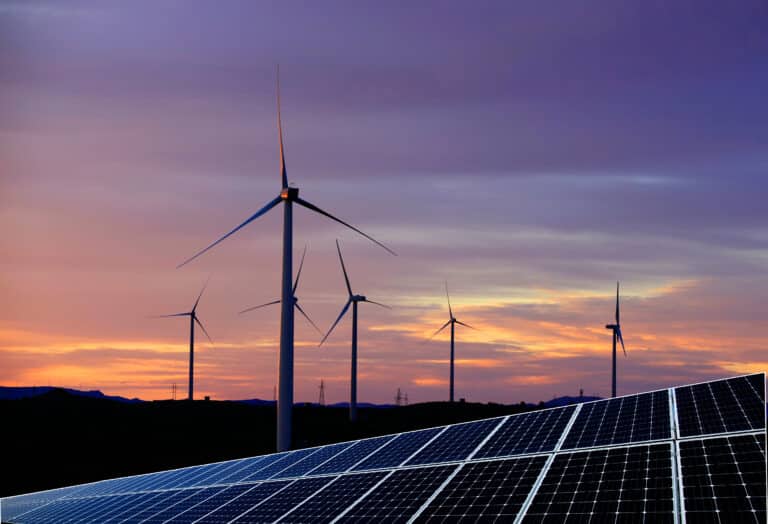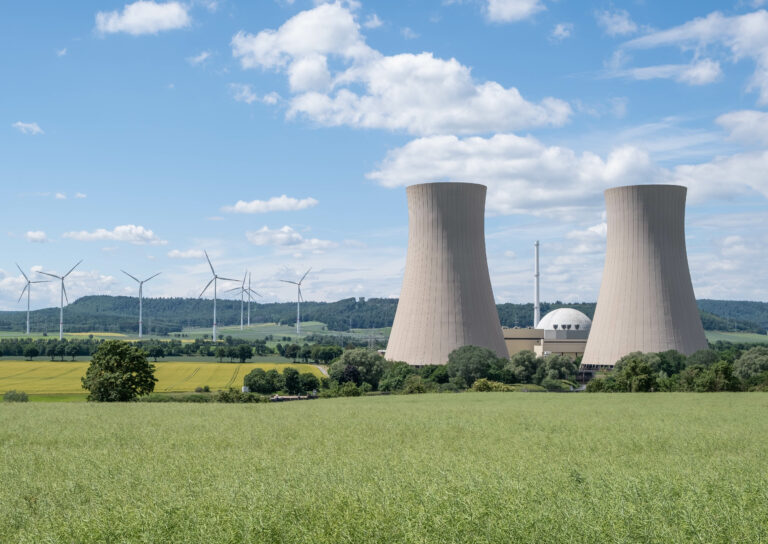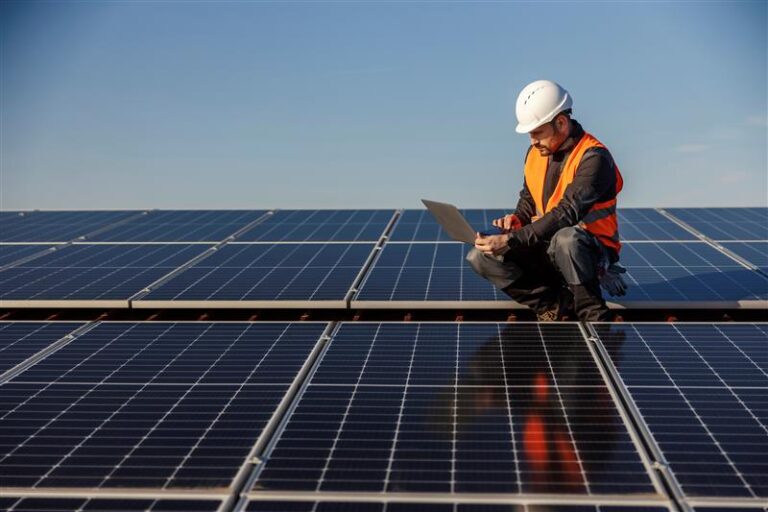Introduction
The United Kingdom witnessed record-breaking energy prices in 2022, along with some other European nations. A number of factors, failures and simply bad luck all led up to this defining point. This report aims to re-live that timeline – from when the energy crisis began to unravel in 2021, all the way up to the time of writing this.
In recent months we have seen energy prices reduce significantly, with some positive signs of a return to a more stable market environment. But they remain around three times higher than historical norms, and because of that, the energy crisis is by and large still ongoing.
Chapter One
Understanding the UK Energy infrastructure
Before we go further, it is important to understand the country’s set up and infrastructure, and why the UK may be more sensitive to commodity price fluctuations and a tightening global supply picture than others.
Firstly, we will look at the key role natural gas plays in the UK. The commodity is key, not only to the gas market, but also to the power market and electricity prices, since natural gas contributed up to 41% of the UK’s Power generation mix in 2022, and the figure being as high as 70% on low wind generation days.
Fig 1. UK Power mix annually, 2022 https://grid.iamkate.com/
Natural gas has several flexibility advantages in its reliability and demand response for the National Grid, with gas to power conversion via CCGT (combined cycle gas turbine) key to balancing the power grid. Gas power stations are also significantly cheaper and quicker to build than alternatives, such as nuclear. This is why, during the privatisation of the industry in the 80s and into the 90s, we saw significantly more growth in gas-powered stations being built, because it was seen as far more profitable, despite the vulnerabilities a changing commodity price could bring, from the imported fuel.
Next is understanding where we currently get our natural gas from. The UK, despite having its own gas reserves in the North Sea, is not self-sufficient to meet demand levels. Gas from our own UKCS (UK Continental shelf), accounts for around one third of gas requirements. A further third is provided by Norway, where we have a strong trading partnership with Equinor. The final third is imported via LNG (Liquefied Natural gas) shipments. In recent years, the USA has become the biggest LNG trading partner for the UK. Other nations that provide significant LNG volume to the UK are Qatar and other regions of the Middle East; North Africa; and, until recently, Russia.
Staying on the topic of LNG, it is important to understand how it has helped and enabled the UK to operate a ‘just in time’ gas supply strategy. The aim is to eliminate “waste” and improve efficiency, reducing the need for stockpiling and extra workforce; simplifying the supply network; and delivering supply at speed as and when it is needed. LNG deliveries have allowed excess gas to be booked as needed.
For the most part it has been a smooth strategy for the UK, but its vulnerabilities are highlighted, as we saw in 2022, when supply chain tightens and commodity prices spike globally.
The main impact in operating this strategy is the lack of storage capacity, where the UK trails significantly behind much of Europe in stockpile capacity, despite having one of the highest gas consumption needs, making it more sensitive to spot price fluctuations.
Fig 2. UK Gas storage capacity, compared to other European Countries, January 2022 UK Energy, 2022
Having such a small storage capacity makes the UK one of the most sensitive to any supply disruption, with little buffer to fall back on. To try and mitigate this, the country has a diverse source of natural gas with multiple trading partners and nations, as explained previously. As a result, despite the energy crisis and serious tests, supply has always met demand, with no disruption.
In summary, we can see that the UK has high reliance on natural gas to fulfil its energy needs. The fact it still accounts for 40% of the UK’s power generation means both gas and electricity prices are impacted by fluctuating commodity prices. The UK’s lack of significant storage capacity and reliance on a smooth supply chain, means national energy prices are particularly affected by any disruption, whether that be physical disruption, or a competitive global market for supply.
Understanding the above helps to illustrate the impact of the timeline below, when the UK became one of the most expensive countries in the world for energy:
Fig 3. Electric rate, 2023 https://www.electricrate.com/data-center/electricity-prices-by-country/
Chapter Two
Timeline of Energy Crisis
With prices hitting decade lows in 2020, we saw the quickest market reversals ever seen in the UK. The start of the energy crisis can be debated, but a good starting point would be in the Spring of 2021. It was at this point we first started to see real momentum in price rises.
Below is a list of key events contributing to the energy crisis:
Spring & Summer of 2021 – The end of Covid lockdown restrictions
The start of 2021 saw the UK and much of Europe in deep lockdown restrictions. The Delta variant coronavirus was spreading across the globe, and many nations turned to restrictive lockdown measures to try and contain transmission. During this time, we saw significant energy demand destruction, with commercial buildings, factories and overall business activity all supressed in usage.
April 2021 saw some significant restrictions begin to lift, and by June 2021, we saw a dramatic rise in energy demand, with businesses returning to full or near-full operation and staff, particularly blue collar returning to operation at their place of work.
The swing in demand was not just seen in the UK, but roughly the same time across Europe and much of the world. The notable exceptions being China, Australia and New Zealand which opened up much later. This swing in demand squeezed the energy supply chain, much of which was scaled down to the new demand levels during the lockdown period.
Oil and Brent Crude is the best example of this shift in momentum. Transportation demand surged and oil saw a rapid rally in price. In January, a barrel was at $50. By August that had surged to $80, representing a 60% increase.
Covid had one more impact. The summer of 2020 saw little maintenance work, and that backlog of work was mainly pushed back into the summer of 2021, where the gas maintenance season typically peaks in the summer period. The schedule was more or less double, and the season much longer, running into the month of November, which is rare. The scale of maintenance work curtailed supply at times, and made outages more prone, all of which pressured gas and power prices higher.
September 2021 – IFA Interconnector fire
By September 2021, we had hit decade-high prices, at around £90MWh. September would see this break £100MWh, with the fire and outage at IFA interconnector rendering the 2GW infrastructure unusable.
IFA is one of our most key interconnectors. Running below the English Channel between the UK and France, it is used to import electricity from France and help balance our UK grid. While 1GW of supply was quickly restored, the other half of its capacity took over a year to be repaired, adding bullish sentiment into the markets, and increasing fears of further delays.
This was the first ‘spike’ witnessed in the market, with wholesale prices nearly doubling in one month, ending the month of September at £198MWh.
December 2021 – French nuclear power crisis
After a period of market consolidation, we saw our second, and even more major rally in energy prices occur in December 2021. Part of this rally was the first signal of reducing Russian gas flows into Europe. But more of that to follow. The market’s main concern was worrying signs closer to home, over in France.
EDF found multiple faults, cracks, and damage on its nuclear reactors, and had to take several offline as a result. The damage was linked to corrosion and has been an ongoing issue for France’s aging nuclear fleet for several years. But this news came at an unfortunate time in the peak of Winter 2021, which had been a particularly cold winter.
There were genuine fears on some forecasts that EU gas storage may run to zero by March 2022 if the outages persist, with storage levels already at low levels in December. Thankfully, a very mild January followed, with the warmest New Year’s Day on record in the UK, and the markets breathed a sigh of relief.
February 2022 – Russia invades Ukraine
On 24 February 2022, the world flipped on its head once more, when war time in Europe was back.
It is often misunderstood, but before one Russian soldier even stepped foot in Ukraine, we were already in a full-blown energy crisis. But this event changed everything going forward.
This could arguably be the biggest section of the report, with several direct and indirect consequences of the war on energy prices. To keep this concise, we will break it down to fundamentals and market sentiment.
Firstly, on fundamentals, NS2 (Nord Stream 2) having been fully complete and ready to supply gas into Europe was all but axed and ultimately bankrupt because of the war. Many saw NS2 as a solution to the energy crisis, but this narrative was soon ended, with Germany adamant no contracts would now go ahead. We also saw gas flows from NS1 start to decline, and gas flows through Yamal go to zero, and start flowing in reverse into Poland.
Europe moved quickly to also ban and restrict certain energy commodities over the coming months, starting with Russian-sourced coal and oil. Natural Gas was a much trickier prospect to ban, but this was also eventually agreed within the EU and other western nations in the Autumn of 2022.
The second aspect is sentiment, which was the main driver for the market following on from the invasion. An ongoing war brings with it a lot of uncertainty, with markets often fearing unknowns and pricing in risk as a result.
Fears surrounding further escalation in conflict, escalations in sanctions hitting energy commodities and Russia using energy as political leverage against Europe were all active fears in the market. A lot of these did materialise, and the market had to speculate on the extent these would go, often steering on the side of caution and worse case scenarios at the back end of the summer.
March 2022 – Wider energy commodities surge in value
March 2022 saw the top of the next peak in energy prices, and fuelling this momentum was all other energy commodity prices rallying. The likes of coal, oil, and carbon EUA’s all surged in value, with fears of scarcity of future supply on global markets.
Oil was perhaps the most impactful of these, with Brent Crude hitting a high of $129/barrel at its height, a 15-year-high for the commodity. The only time it ever traded higher was in the 2008 bubble before the run up to the great financial crash.
Though oil is not fundamentally linked to gas and power markets, it does carry a heavy sentiment link, and all other energy commodities share some degree of correlation between them, often impacted by similar drivers. With March 2022 seeing other energy markets surge, this created a positive feedback loop on other markets, such as gas and power continuing to also rise.
July 2022 – Texas Freeport LNG Terminal outage
Between April and June 2022, the market was fairly settled in a period of consolidation. It was showing signs it would begin to decline in fact, with fears starting to ease back. All of this changed on the 14 June when a fire broke out at a key LNG terminal in the U.S. At first it was only thought to be minor and take a few weeks to re-resume. In July, the damage was confirmed as extensive, and the terminal would be out of operation for considerably longer, sending shockwaves across the world’s energy markets.
Why was the outage so impactful? Freeport accounts for around 20% of the U.S. LNG output, of which the U.S. is the global leader in supply. The outage dramatically changed the supply outlook for the remainder of the year, forecasting a much tighter LNG market. A market Europe had betted big on being its solution in moving away from Russian-sourced gas.
July & August 2022 – Record-breaking heatwaves
Still digesting the Freeport news, the markets would be hit by further compounding bullish factors. The summer of 2022 saw two sustained heatwaves, bringing with them a record-breaking 41-degree peak.
It’s common to assume warm weather is a good thing for prices, which is typically the case, but at these soaring temperatures, it becomes just as bad as a cold snap, as energy demand surges and hydro stocks decimated, which they were as the UK endured one of the worse droughts on record.
The reason demand surges during heatwaves is the growing set up and infrastructure of air conditioning, a very energy-intensive action, which almost every modern office now has to keep temperatures regulated and legally safe for a place of work. The impact is much more direct on the power market, than it is gas, which is why, during this time, we saw the UK pay Belgium a record and unfathomable £9,724.54MWh during the near peak of the first heatwave on the 20 July 2022.
The UK was hit with not one, but two main heatwaves in the end, and while the first in July saw the record-breaking temperatures, the heatwave in August lasted much longer, with temperatures continually in the 30s, causing the energy market to further surge.
August 2022 – Nord Stream 1 reduced to 0%
August 2022 was a particularly bad month, it’s fair to say. The month had one more thing to throw at us towards the end, with Nord Stream 1 gas flows reducing to zero, causing market prices to hit new ATH (all-time highs), on 30 August.
NS1 had been an ongoing saga all summer, with gas flows continually lowered, from 40%, to 20% to ultimately 0. Much of this revolved around the turbine saga you may remember which was, for a while, the market’s main concern and focus.
Cutting a long story short, for various reasons, NS1 was left with 1 or 4 operational turbines and the repaired turbine which found itself going from Canada to Germany could not be exported to Russia due to a lot of custom and red tape import laws in the end. And that was it. The inevitable happened, and Russia’s last significant gas flowing pipeline into Europe shut down over night.
Chapter Three
Summer Outlook 2023
So far in 2023, we have seen prices consolidate and steadily decline from January to March, slowing down in its decline with each passing month. The volatility in the markets has notably reduced, and there is just as much bearish sentiment and news, as there is bullish now, compared to 2022.
In terms of key events this year, we know of a few to keep your attention on, which could dictate future market movements. The main ones are listed below:
EU Gas storage levels through the summer
Exiting the winter with high robust gas storage levels has given Europe a very strong hand. What is now key is taking advantage of this head start during injection season. Europe has a mandate to hit 90% as an average prior to next Winter. Already sitting on 56% at the start of April, the task is much more manageable to achieve, and increases the likelihood of it being achieved.
April, or May at the latest should be when we see Europe and the UK pivot from withdrawing from storage, to injecting back in. When that shift happens, the rate of this replenishment will be important to dictating price sentiment this summer.
How the conflict develops in Ukraine
The conflict in Ukraine bedded in over the Winter, with front lines mainly static and forces on both sides consolidating positions. Because of this, it has almost now become a background factor in influencing prices, with less attention placed on it than we saw in 2022.
But that could change as we enter spring, with wide speculation of a Ukrainian counter offensive, and Russia assembling forces, particularly in Belarus.
It is impossible to say when and how anything will play out, and this report is not trying to theorise this. But we would not expect the conflict to remain in its embedded state all summer.
While an escalation in the conflict will no doubt be a bullish factor in prices, if more so on sentiment than fundamentals, any re-instated peace talks would be one scenario which would provide bearish sentiment.
How long will French strike action last
March saw the emergence of a new market driver to contend with. Industrial strike action in France over pension reforms.
This has been a bullish driver, placing uncertainty back into the market, and making France’s power output increasingly unreliable.
Right now, at the time of writing, no resolution appears near, with both sides standing firm on their stance. So, we can expect this to be an ongoing issue for the markets to have to price in. And price in they have, by the looks of it so far. But should things escalate, or drag on deep into the summer, that could be beyond expectation, and keep prices elevated. Conversely, should strike action ease, particularly on power infrastructure, such as the nuclear plants, then we could see prices drop a good 5% to 10%, depending on market confidence.
Weather outlook this summer
The final big factor we can see being important is how the weather plays out. Last summer brought two extreme heatwaves, which caused energy price to soar. Should this summer see a similar trend, it would be dramatically bullish on prices once more.
The months most susceptible to heatwaves are June, July, and August, with minimal risk over the other gas calendar summer months (April, May, September).
It is too early to know with confidence what the weather holds, but April is starting off on the cooler side this year, compared to the much warmer conditions last year.
Mild to warm days, with good levels of wind and clear skies for solar output is what you want over summer to help pressure prices down. Extreme heat, and still days have the opposite effect, and pressure the grid.
Chapter Four
Zenergi’s view on prices Summer 23
As we enter the Summer-23 season, we find ourselves frequently at new year-to-date lows, and prices at the lowest point in around 15 months. The fall off from the peak in August 2022 has been dramatic, with an 80% reduction, and a 50% reduction since the start of December when the next steep sell-off occurred.
The rate of the sell-off has surprised most, and prices are far more favourable than we could have imagined back in December, when facing the coldest spell of weather since 2018’s Beast from the East.
It is therefore easy to default to the view that that trend will continue, and that prices will further decline into the summer. And if we have a favourable mild summer weather-wise, gas storage replenishes, and geopolitical issues ease, that would most likely be the case.
However, it is important to take a balanced viewpoint, and there is arguably more room for prices to run back higher than there is to move lower, and previous historical data can point towards this.
Research from Cornwall Insight suggests a return to pre-energy crisis conditions around 2030. If we look at today’s prices on the curve, we can see gas and power is available to purchase for 2027 consumption at fairly near those values to support this claim, with the curve in a state of backwardation, which is when prices progressively get cheaper.
Fig 4. NBP Price curve, April 2023 Cornona Energy 2023
The above illustration shows the forward market, which is what all fixed contracts are indexed on at the point of lock in. However, those on flexible procurement also have the option of exploring the spot market, known as the day-ahead market.
Last year showed how the day-ahead market outperformed the forward market of Summer-22, with an average of 213p/therm on the NBP (7.26p/kwh) vs the average forward market average of 234p/therm (7.98p/kwh) for the trading window of 2022.
We remain a strong believer in the day-ahead market for this summer. Excluding 2022, there is typically less volatility than traditional winter months.
Last year’s market pattern
Last year we saw a very similar period of consolidation in the markets after the fall out of the invasion of Ukraine. Prices held largely unchanged between April and June 2022, before breaking out much higher.
While no two years are ever the same, and past market performance is not necessarily an indication of future ones, it is at least evidence, that after a three-month consolidation, prices can still run back higher.
The September drive
October accounts for around 70% of all annual renewals at Zenergi, and is an indication of the wider market, most of which renews on the 1 October as a legacy of the date the industry de-regulated.
This often creates heightened buying pressure on the market, with a proportion of contracts either defaulting its renewal in September, or simply contracting then. It is not always the case, but often we see September as a bullish month on prices, particularly towards the end, due to this pressure.
Prices rise fast, but fall slow in 2023
So far this year we have seen that when prices have risen, they do so very quickly, often due to unexpected events which the markets need to correct for before taking in additional information. We do naturally see prices fall at a slower sustained rate in this new market phase.
The point here is that you may not be able to react in time to secure your contract or trades if outlooks do quickly change.
And if a 15% daily rise in March was anything to go by, the energy markets are still sensitive and more than capable of changing in a blink.
Chapter Five
Conclusion
We have covered a lot of content across both these reports, unravelling the UK Energy crisis and our summer outlook of 2023, so, it’s important to summarise and conclude our final thoughts.
A combination of factors, including the UK’s infrastructure set up, past investment, unfortunate luck and timing, as well as global events have all contributed to the energy crisis.
You would now strongly hope the worse of the energy crisis is behind us. Having seen an 80% reduction from the peak, it would take a huge combination of unfortunate events for prices to return to these levels. And while nothing is impossible, it seems a remote possibility at best.
We are, however, still very much in the energy crisis, considering that energy prices are around two to three times higher than historical trading averages.
As we enter the Summer-23 season, we can see how much more favourable conditions have become. We do, however, note that it should not necessarily be assumed prices will continue to decline in the medium term, at least without a chance of some volatility.
The key factors and price drivers we are aware of for this summer have been outlined. Many of which can go one of two ways and will likely determine market movements for the next six months.
Final thoughts are that prices do currently offer attractive valuations compared to what was once thought reasonable. The day-ahead market still appears good value too, and we have noticed in recent weeks the gap between the two narrowing.
Overall, right now looks well suited to secure these rates, particularly if you have a renewal in 2023, and offers a good opportunity for those trading on flexible procurement.













